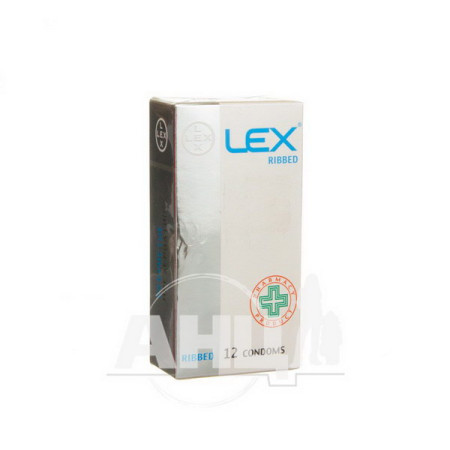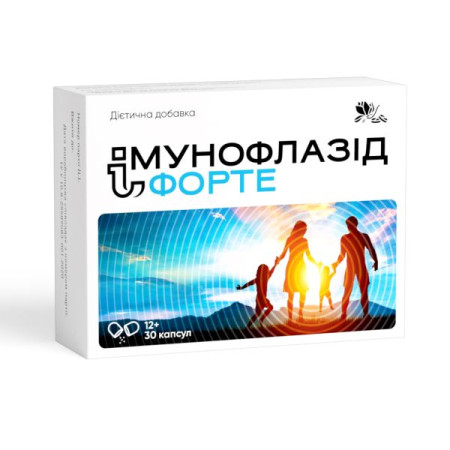Nootropil film-coated tablets 800 mg No. 30

Instructions for Nootropil film-coated tablets 800 mg No. 30
Composition
active ingredient: piracetam;
1 tablet contains 800 or 1200 mg of piracetam;
excipients: macrogol 6000, colloidal anhydrous silica, magnesium stearate, croscarmellose sodium, Opadry Y-1-7000 (hypromellose (E 464), titanium dioxide (E 171), macrogol 400), Opadry OY-S-29019 (hypromellose (E 464), macrogol 6000).
Dosage form
Film-coated tablets.
Main physicochemical properties: oblong tablets, film-coated white, with a score on both sides; on one side of the tablet, an imprint of “N” is applied on both sides of the score.
Pharmacotherapeutic group
Psychostimulants and nootropics.
ATX code N06B X03.
Pharmacological properties
Pharmacodynamics.
Piracetam is a nootropic agent, i.e. a psychotropic drug that directly improves the efficiency of cognitive functions. There are probably several mechanisms of action of the drug on the central nervous system: changing the speed of propagation of excitation in the brain; enhancing metabolic processes in nerve cells; improving microcirculation by affecting the rheological characteristics of blood without vasodilating action. Long-term or single use of piracetam in patients with cerebral dysfunction leads to significant changes in the electroencephalogram, which demonstrate increased attention and improved cognitive function (increased α- and β-activity and reduced δ-activity).
Piracetam inhibits hyperaggregation of activated platelets. In case of pathological rigidity of erythrocytes, piracetam increases their filtration capacity and elasticity. Piracetam has a protective and restorative effect in case of impaired brain function due to hypoxia, intoxication and electroshock therapy.
Piracetam is used as a monotherapy or as part of a complex treatment for cortical myoclonus to reduce the severity of the provoking factor - vestibular neuronitis.
Pharmacokinetics.
Absorption
After oral administration, piracetam is rapidly and almost completely absorbed from the gastrointestinal tract. Bioavailability is almost 100%.
After a single administration of 2 g of the drug, Cmax is reached in blood plasma after 30 minutes, and in cerebrospinal fluid - within 2-8 hours and is 40-60 μg/ml.
Distribution
Piracetam does not bind to plasma proteins, and the apparent volume of distribution of piracetam is almost 0.6 l/kg. Piracetam is distributed throughout all tissues and penetrates the blood-brain barrier, placental barrier and membranes used in hemodialysis. Piracetam accumulates in the tissues of the cerebral cortex, mainly in the frontal, parietal and occipital areas, the cerebellum and basal ganglia.
Biotransformation
Piracetam is active in its unchanged form and is not metabolized in animals.
Breeding
The half-life of the drug from the blood is 4–5 hours and from the cerebrospinal fluid is 6–8 hours. This period may be prolonged in renal failure. Piracetam is excreted by the kidneys. It is excreted in the urine almost completely (more than 95%) after 30 hours. The renal clearance of piracetam in healthy volunteers is 86 ml/min.
Indication
Adults:
symptomatic treatment of pathological conditions accompanied by memory impairment and cognitive disorders, with the exception of diagnosed dementia;
Treatment of cortical myoclonus as a monotherapy or as part of complex therapy. A trial course of treatment for a limited period of time can be conducted to check sensitivity to piracetam.
Contraindication
Hypersensitivity to piracetam or pyrrolidone derivatives, as well as to other components of the drug.
Acute cerebrovascular accident (hemorrhagic stroke).
End-stage renal failure.
Huntington's cholera.
Interaction with other medicinal products and other types of interactions
Thyroid hormones.
When used together with thyroid hormones (T3+T4), increased irritability, disorientation, and sleep disturbances are possible.
Acenocoumarol.
Clinical studies have shown that in patients with severe recurrent thrombosis, the use of piracetam at doses of 9.6 g/day did not affect the dosage of acenocoumarol to achieve an INR of 2.5–3.5, but with its simultaneous use, a significant decrease in the level of platelet aggregation, β-thromboglobulin release, fibrinogen levels, von Willebrand factors (VIII: C; VIII: vW: Ag; VIII: vW: Rco), and viscosity of whole blood and plasma was observed.
Pharmacokinetic interactions.
The likelihood of changes in the pharmacokinetics of piracetam under the influence of other drugs is low, since approximately 90% of the drug is excreted unchanged in the urine.
In vitro, piracetam does not inhibit the major human liver cytochrome P450 isoforms CYP1A2, 2B6, 2C8, 2C9, 2C19, 2D6, 2E1 and 4A9/11 at concentrations of 142, 426, 1422 μg/ml.
At a concentration of 1422 μg/ml, a slight inhibition of CYP2A6 (21%) and ZA4/5 (11%). However, the Ki level for inhibition of these two CYP isomers is sufficient above 1422 μg/ml. Therefore, metabolic interactions with drugs that are biotransformed by these enzymes are unlikely.
The use of piracetam at a dose of 20 g/day daily for 4 weeks or more did not change the concentration curve and maximum concentration (Cmax) of antiepileptic drugs in serum (carbamazepine, phenytoin, phenobarbital, sodium valproate) in patients with epilepsy receiving stable doses.
Alcohol.
Co-administration with alcohol did not affect the level of piracetam concentration in blood plasma, and alcohol concentration did not change when using 1.6 g of piracetam.
Application features
Effect on platelet aggregation.
Due to the fact that piracetam reduces platelet aggregation (see section "Pharmacodynamics"), the drug should be prescribed with caution to patients with impaired hemostasis, conditions that may be accompanied by bleeding (gastrointestinal ulcer), during major surgical operations (including dental interventions), patients with symptoms of severe bleeding or patients with a history of hemorrhagic stroke; patients using anticoagulants, platelet antiaggregants, including low doses of acetylsalicylic acid.
Kidney dysfunction.
The drug is excreted by the kidneys, therefore special attention should be paid to patients with renal insufficiency (see the section "Method of administration and dosage").
Elderly patients.
During long-term therapy in elderly patients, regular monitoring of renal function is recommended, and if necessary, the dose is adjusted depending on the results of the creatinine clearance study (see section "Method of administration and dosage").
Interruption of application.
When treating patients with cortical myoclonus, abrupt discontinuation of treatment should be avoided due to the risk of generalization of myoclonus or the occurrence of seizures.
Warnings related to the content of excipients.
Nootropil®, film-coated tablets, 800 mg, contain 1.5 mg sodium per tablet, equivalent to 0.08% of the WHO recommended maximum daily intake of sodium of 2 g for an adult.
Nootropil®, film-coated tablets, 1200 mg, contain 2.3 mg sodium per tablet, equivalent to 0.12% of the WHO recommended maximum daily intake of 2 g sodium for an adult. Caution should be exercised when used in patients on a controlled sodium diet.
Use during pregnancy or breastfeeding
Do not use the drug during pregnancy and breastfeeding.
Ability to influence reaction speed when driving vehicles or other mechanisms
Given the adverse reactions observed with the use of this medicinal product, an impact on the ability to drive and use machines is possible and should be taken into account.
Method of administration and doses
Nootropil® film-coated tablets can be taken regardless of meals. The drug is administered orally, washed down with a small amount of water.
Adults.
Treatment of conditions accompanied by memory impairment and cognitive disorders.
The recommended daily dose is 2.4–4.8 g. The dose is usually divided into 2–3 doses.
Treatment of cortical myoclonus.
The initial daily dose is 7.2 g, which is increased by 4.8 g every three or four days to a maximum dose of 24 g, which is divided into two or three doses. Treatment with other antimyoclonic drugs is maintained at the previously prescribed doses. Depending on the therapeutic effect obtained, the dose of other antimyoclonic drugs should be reduced if possible.
Treatment is continued until the symptoms of the disease disappear. In patients with an acute course of the disease, spontaneous improvement may occur over time, so every 6 months an attempt should be made to reduce the dose or discontinue treatment with the drug. For this purpose, the dose of piracetam is reduced by 1.2 g every two days (every three or four days in the case of Lantz-Adams syndrome in order to prevent sudden relapse or seizures associated with drug withdrawal).
Special patient groups.
Use in elderly patients.
Dose adjustment is recommended for elderly patients with known or suspected renal impairment (see section 4.2). During long-term treatment, creatinine clearance should be monitored in such patients to ensure adequate dose adjustment.
Dosage for patients with renal impairment.
Since the drug is excreted from the body by the kidneys, caution should be exercised when treating patients with renal insufficiency; monitoring of renal function is recommended in such patients.
The increase in half-life is directly related to the deterioration of renal function and creatinine clearance. This also applies to elderly patients, in whom creatinine clearance is age-dependent. The interval between doses should be adjusted based on renal function.
The dose is calculated based on the patient's creatinine clearance using the formula:
Treatment for such patients is prescribed depending on the severity of renal failure, adhering to the following recommendations:
| Degree of renal failure | Creatinine clearance (ml/min) | Dosage |
| Normal kidney function | > 80 | Usual dose divided into 2 or 4 doses | Light | 50–79 | 2/3 of the usual dose in 2–3 doses |
| Moderate | 30–49 | 1/3 of the usual dose in 2 doses |
| Severe | < 30 | 1/6 of the usual dose once |
| Terminal stage | – | Contraindicated |
Dosage for patients with impaired liver function.
No dose adjustment is required for patients with impaired hepatic function alone. In cases of diagnosed or suspected hepatic and renal dysfunction, dose adjustment is carried out as indicated in the section "Dosage in patients with impaired renal function".
Children.
Not used.
Overdose
Symptoms: increased side effects of the drug. Symptoms of overdose were observed with oral administration of the drug at a dose of 75 g.
Treatment is symptomatic: gastric lavage, induction of vomiting. There is no specific antidote, hemodialysis can be used (removal of 50–60% of piracetam).
Side effects
Adverse reactions observed during clinical trials and during post-marketing surveillance are listed by system organ class and frequency.
The frequency is defined as follows: very common (≥ 1/10), common (≥ 1/100 to <1/10), uncommon (≥ 1/1,000 to <1/100), rare (≥ 1/10,000 to <1/1,000), very rare (<1/10,000), frequency unknown (frequency cannot be estimated from the available data). Post-marketing data are insufficient to estimate the frequency of adverse reactions in the treated population.
From the blood and lymphatic system.
Frequency unknown: hemorrhagic disorders.
From the immune system.
Frequency unknown: hypersensitivity, anaphylactoid reactions.
Mental disorders.
Common: nervousness.
Uncommon: depression.
Frequency unknown: increased excitability, anxiety, confusion, hallucinations.
From the nervous system.
Common: hyperactivity.
Uncommon: drowsiness.
Frequency unknown: ataxia, balance disorders, increased frequency of epileptic seizures, headache, insomnia, tremor.
From the side of the organs of hearing and labyrinth.
Frequency unknown: dizziness.
From the digestive system.
Frequency unknown: abdominal pain, upper abdominal pain, diarrhea, nausea, vomiting.
On the skin and subcutaneous tissue.
Frequency unknown: angioedema, dermatitis, urticaria, pruritus.
From the reproductive system and mammary glands.
Frequency unknown: increased sexual activity.
General disorders.
Uncommon: asthenia.
Research.
Common: weight gain.
Reporting of suspected adverse reactions
Reporting adverse reactions after the registration of a medicinal product is important. This allows monitoring of the benefit/risk ratio of the medicinal product. Medical and pharmaceutical professionals, as well as patients or their legal representatives, should report all cases of suspected adverse reactions and lack of efficacy of the medicinal product via the Automated Information System for Pharmacovigilance at the link: https://aisf.dec.gov.ua.
Expiration date
4 years.
Storage conditions
Does not require special storage conditions.
Keep out of reach of children.
Incompatibility
Unknown.
Packaging
Film-coated tablets, 800 mg, 15 tablets in a blister, No. 30 (15x2) in a cardboard box; or 1200 mg, 10 tablets in a blister, No. 20 (10x2) in a cardboard box.
Vacation category
According to the recipe.
Producer
UCB Pharma, Belgium.
Location of the manufacturer and address of its place of business
Chemin Du Foriest 1, Braine-L'alleud, 1420, Belgium.
Applicant
UCB Pharma SA, Belgium.
Applicant's location
Allee de la Recherche 60, B-1070 Brussells, Belgium / Allee de la Recherche 60, B-1070 Brussells, Belgium.
There are no reviews for this product.
There are no reviews for this product, be the first to leave your review.
No questions about this product, be the first and ask your question.















